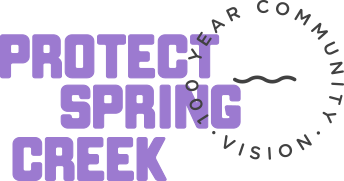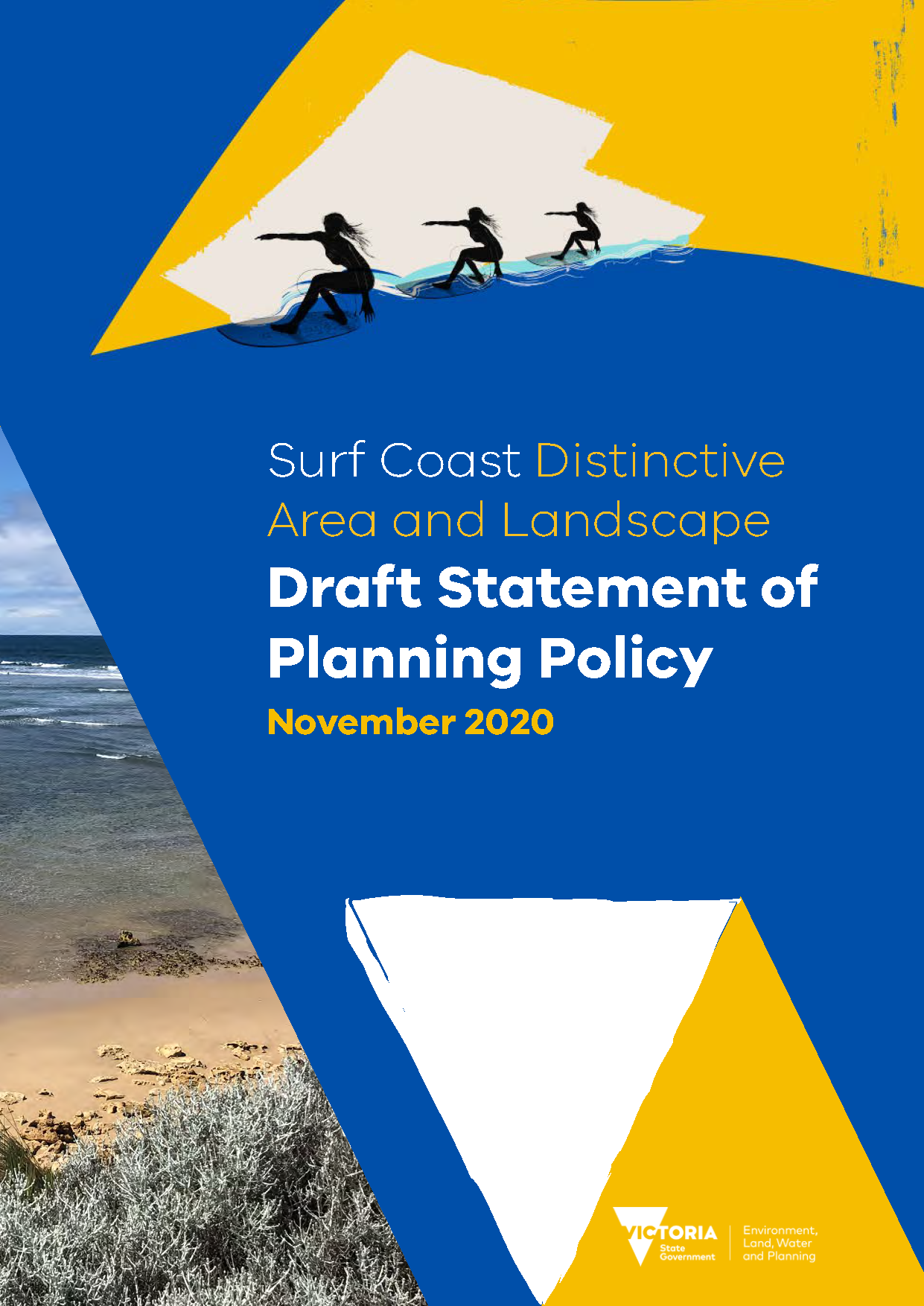
We must act now to protect the valley for good.
Despite the Victorian Premier promising Spring Creek would not be developed west of Duffields Road in the 2018 election, the Spring Creek valley has yet to be saved.
The most important thing you can do to protect Spring Creek is write a submission on the Engage Victoria website by January 22 2021.
To attend the online forum to be held in February 2021 tick the box stating you want to make a presentation to the state government panel.
Use the content topics in this document to help create your submission but do not copy and paste what you see here. Petitions and copied submissions will only be counted as one. You don’t have to write about everything, write about the topics that you care about. You don’t have to be an expert and your submission can be short as you like. The most important point is to communicate you support Option 2.

Why choose option 2?
Option 2 can create long term high value jobs that support our visitor economy. It would protect the international brand supporting our visitor economy of the Great Ocean Road which overlooks the entire Spring Creek valley.
Spring Creek, west of Duffields Road should be designated outside the protected settlement boundary and form part of the green break between Torquay and Bellbrae.
The green boundary should be protected by appropriate planning provisions that permanently prohibit urban subdivision.
Option 2 provides a protected area which enables the restoration of habitat in Spring Creek valley for flora and fauna. Destruction of threatened species habitat in Australia continues to accelerate due to the loopholes and failures of our national nature laws - the Environment Protection and Biodiversity Conservation (EPBC) Act. Australia has the world’s highest rate of mammal extinction and preservation of this ecosystem for so native species is important for the environmental values and communities of the region. Protection of Spring Creek is not just for the benefit of Torquay and Jan Juc but for all Victorians. The Spring Creek valley contains critical habitat for a number of listed, critically endangered, endangered, threatened and vulnerable species including,
Grey-headed Flying Fox, Southern Brown Bandicoot, Growling Grass Frog, Swift Parrot, Powerful Owl, Little Galaxia, Grey Goshawk, Southern Pygmy Perch, Baillon's Crake, Lewin's Rail, Eastern Great Egret, White-footed Dunnart, Brown Toadlet and the Bellarine Yellow Gum
Option 2 in the DAL protects the aboriginal cultural significance of the Spring Creek valley.
Option 2 preserves and contributes to the Bells Beach visitor experience. The drive from Torquay to the internationally renowned and natural rural setting of Bells Beach is iconic and makes visiting Bells Beach so special.
Torquay is a very popular tourist destination. The Spring Creek valley in its current state is a significant asset to all Victorians and visitors from further afield. The Victorian economy and many businesses in Torquay rely upon tourism and only Option 2 will preserve our wonderful rural and coastal visitor experience.
Whilst the community can’t physically access most of the Spring Creek valley land, many have a connection to that land and its spectacular views as they travel along the Great Ocean Road, Grossmans Road and Duffields Road. It sets the scene for the entire length of Great Ocean Road where coastal townships are separated by long stretches of Victoria’s bushland and coastal vistas.
Option 2 protects the sense of place experienced by residents and visitors alike, and is far more appropriate at the gateway to the Great Ocean Road than an expanse of houses.
Why reject option 1?
Torquay/Jan Juc has a permanent population close to 20,000 people with the holiday population boosting our numbers to approximately 40,000 during the busy Christmas period. In peak periods, Torquay’s roads, beaches, health facilities, eateries and commercial enterprises are at capacity. During summer, the Great Ocean Road is bustling with vehicles lined up from the entrance of Torquay stretching to Anglesea. The GOR is at capacity with holiday makers and residents during peak periods.
Option 1 is contradictory to the Draft Statement of Planning Policy which clearly states that the Surf Coast Declared Area Framework Plan should ‘conserve and enhance the declared area’s significant landscapes’ including the Spring Creek valley, west of Duffields Road (under a state significant landscape overlay). Option 2 supports this aim, Option 1 doesn’t.
Option 1 directly contravenes our planning and environment conservation policies (the Marine and Coastal Policy 2020 and Protecting Victoria’s Environment – Biodiversity 2037). These are intended to protect fragile ecosystems including Bellarine Yellow Gum woodland and other species of state and federal significance within the Spring Creek valley.
Option 1 fails to provide any detail (in the Statement of Planning Policy) on of the number and density of additional houses and residents in our community, nor how the development will be ‘ecologically sustainable’. For example previous plans for the site indicate approximately 1,800 houses as the developer’s idea of low density. That equates to over 4,100 people entering the confined area.
Option 1 creates further adverse impacts beyond the immediate site, including thousands more cars on our roads, crowding of fragile coastal environments including beaches, surf spots and open spaces and their facilities.
There will be additional cost to the state and to the community in managing these assets.
Urban development of the Spring Creek valley is not needed or necessary. The draft DAL documents say future residential growth in the region can be outside of the Surf Coast Shire, it doesn’t have to be in Torquay. We have already taken our fair share of the region’s development burden without any future planning or impact assessment. Torquay cannot support a significant population growth.
Spring Creek valley has now been declared a state significant landscape and urban development will compromise the fragile environment that exists.
Option 1 exposes the population to increased hazards from bushfires. The Spring Creek valley is a designated Bushfire Prone Area.
Development of Spring Creek valley will result in thousands of extra cars on our roads. The Great Ocean Road is already at capacity during peak periods. Evacuation on our roads during a wild fire event would be even more difficult with Option 1.
Other considerations for writing your submission.
Has an Environment Impact Study been completed to inform the DAL process?
An Environment Impact study is urgently needed to inform future planning including the effects on social, environmental, economic and cultural issues on the Surf Coast. This is the only way to ensure that any development planned in the future takes into account all the issues.
Has consideration for Building Heights and Coastal Character been factored in determining the suitability for the development of land in the Spring Creek Valley?
The following planning provisions should apply to Torquay and surrounds:
Maximum 2 storey / 7.5m in Residential areas,
Maximum 3 storey / 10.5m in commercial areas,
No 4 storey buildings in the Town Centre,
No increase in building or housing density,
More open space requirements in new subdivisions and around buildings allowing for large canopy trees.
Has the development investigation area – Torquay North East of the Karaaf Wetlands considered the impact this will have on this sensitive State Nature Conservation Reserve?
The Surf Coast Distinctive Area and Landscape Draft Statement of Planning Policy documents show a ‘future investigation area – Torquay North East’ that could accommodate 2,500 extra people outside the town boundary (on Horseshoe Bend Road where the flower farm is). Urban stormwater from this development would discharge polluted runoff into the Karaaf Wetlands, a State Nature Conservation reserve east of The Sands.
The Karaaf wetlands are internationally significant for their ecological value. The wetlands contain significant coastal saltmarsh species, provide habitat for migratory shorebirds and also the Orange Bellied Parrot.
The saline environment of the wetlands is already under threat from significant volumes of freshwater discharged from the residents stretching east from the Surf Coast Highway. Page 24 of the Statement of Planning Policy states the Karaaf Wetlands are already experiencing higher salt levels from stormwater runoff from urban development.
Right now, an algal bloom is occurring which is caused by excess nutrients polluting the wetlands. Algal blooms deplete oxygen in the water, which kills the aquatic flora and fauna.
Please say no to development of the Torquay North East area. It will pollute the Karaaf wetlands and tip the ecological balance of this sensitive conservation reserve.
Has the DAL considered the impact on Bells Beach and Winki Pop surf breaks?
The declared distinctive area extends 600 metres out to sea from the shore. The DAL recognises that Bells Beach and Point Addis are nationally significant and internationally renowned nature reserves and surf locations.
The views scape extend not only from the land but also from the water. Surfers and ocean users should be afforded an uninterrupted view back to land without hard infrastructure creating an unnatural footprint in a sensitive landscape. Structures like the Winki Pop platform are not necessary to protect the coastal heath vegetation.
Please advocate for views from the water in the Bells Beach area, (and potentially all waters within the declared area), to be included in the DAL.
Has the DAL considered the impact of a rail Transit Corridor from Armstrong Creek to Torquay?
In recent years there has been a push by the government to extend a train line from Armstrong Creek to Torquay. Many in the community believe this would have irreversible negative impacts on the fabric of Torquay.
We instead support an electric bus system with a dedicated bicycle path beside it rather than a train to Torquay.
Option 1 for Spring Creek, potential for future urban development in the Torquay North East area upstream of Karaaf Wetlands, and a future train line to Torquay (proposed Armstrong Creek to Torquay transit corridor) are in conflict with Victoria’s Marine and Coastal Policy 2020 (which applies to private and public land 5 kilometres inland of the high water mark), which seeks to,
Value and protect coastal ecosystems and native and migratory species as they are under threat from human uses and developments,
Maintain non urban breaks between coastal towns and avoid sprawling linear coastal development,
Protect tangible and intangible values of culturally significant sites for current and future generations. These sites play an important part in creating a sense of place and identity for many Victorians,
Retain character of coastal towns and prevent impacts from population growth,
Manage cumulative impacts. Individual impacts might be small but together, ‘they may be catastrophic’.
Protect and seek to enhance the values and characteristics of natural features, landscapes and seascapes in the marine and coastal environment as they are often integral to the identity of the state and it’s people, the liveability of coastal communities and the reason people choose to live there in the first instance.

